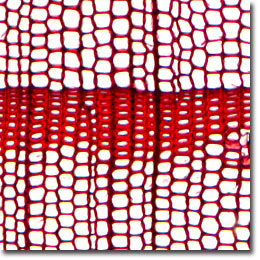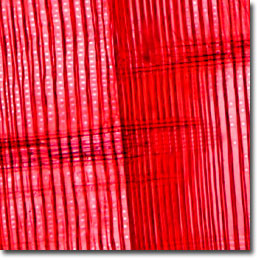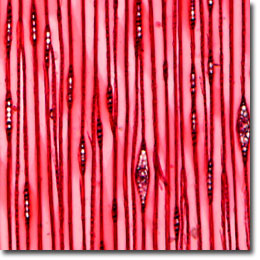The Red Pine
The Red Pine (Pinus resinosa; also known as the Norway Pine) is a softwood tree from the Pinaceae family that grows primarily from Southern Canada to New Jersey and Pennsylvania. Red pine is often called Norway pine, a name that derives from pre-colonial times, when English explorers confused the tree with Norway spruce. The sapwood is narrow to medium wide and white to yellowish in color, while the heartwood is light red to orange-brown or reddish brown and has an oily texture.

Cross Section

Radial Section

Tangential Section
Nearly all of the over 90 known species belonging to the Pinus genus have value as both ornamental and timber trees, and over 50 species are currently cultivated for those purposes. Pine trees are readily available, easy to grow, and make excellent screen or ornamental plants. The red pine grows to a height of 100 feet in native areas, but seldom over 75 feet in cultivation. Having glossy-green, needle-shaped leaves that are four to six inches long, the tree also sports oval or egg-shaped cones that are about two inches long.
Like the white pine, red pine was often used in ship masts in both large and small sailing vessels. In fact, the British Navy was buying large red pine tree trunks from North America as late as 1875. Red pine wood is used for railroad ties, poles, posts, building construction, boxes, crates, pallets, and mill products (sashes, doors, blinds, interior, and exterior finish trim).
Microscopic examination of iron-alum hematoxylin and safranin stained thin sections (see the digital images presented above) reveals resin canals smaller than in most pine trees. Tracheids average 30 to 40 micrometers in diameter, and bordered pits occur in a single row, but occasionally paired on the radial walls. Longitudinal parenchyma are lacking, and the rays are of two types: uniseriate and fusiform with one to ten cells in height; and two to three seriate through the central thickened portion.